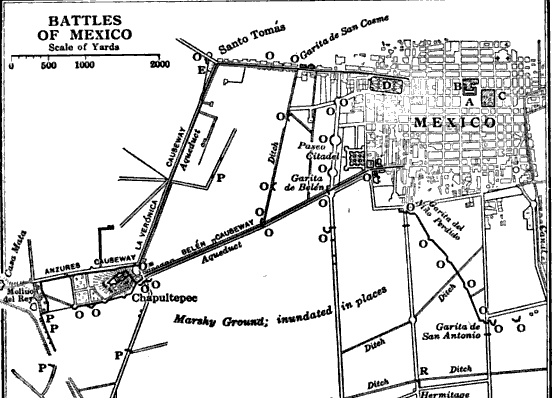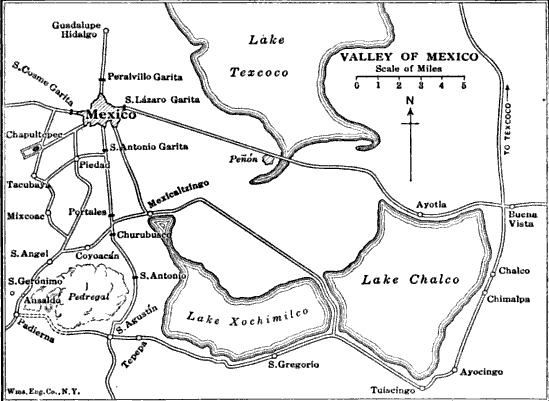|
John Milton Brannan
John Milton Brannan (July 1, 1819 – December 16, 1892) was a career United States Army artillery officer who served in the Mexican–American War and as a Union brigadier general of volunteers in the American Civil War, in command of the Department of Key West in Florida and assigned to Fort Zachary Taylor. Most notably, he served as a division commander of the Union XIV Corps at the Battle of Chickamauga. Brannan was scandalized by the highly publicized disappearance of his first wife, Eliza Crane Brannan, daughter of Colonel Ichabod Bennet Crane, in 1858; she mysteriously disappeared after taking a ferry from Staten Island to Lower Manhattan and was initially presumed to have committed suicide or been murdered, but it was later discovered that she had secretly fled to Europe and married another United States Army artillery officer, First Lieutenant Powell Wyman. Early life and military career Brannan was born in Washington, D.C., and was a messenger in the United States Hou ... [...More Info...] [...Related Items...] OR: [Wikipedia] [Google] [Baidu] |
Battle Of Saint John's Bluff
The Battle of St. John's Bluff was fought from October 1–3, 1862, between Union and Confederate forces in Duval County, Florida, during the American Civil War. The battle resulted in a significant Union victory, helping secure their control of the Jacksonville area. History The St. Johns River was important in the Union effort of taking Florida. If Federals controlled the St. Johns River then they could raid Confederate positions in the interior of Florida and also use the river as a barrier for control of the east. The Union wanted to control North Florida and use it as a haven for escaped slaves and use its position to initiate Reconstruction for Florida. Federals first occupied Jacksonville, Florida in March 1862. Federal gunboats stationed at Mayport Mills operated up and down the river. Early in the war, in order to stop the movement of Union Navy ships up the St. Johns River, Confederate Brigadier General Joseph Finnegan established an artillery battery on St. Johns B ... [...More Info...] [...Related Items...] OR: [Wikipedia] [Google] [Baidu] |
Washington, D
Washington commonly refers to: * Washington (state), United States * Washington, D.C., the capital of the United States ** A metonym for the federal government of the United States ** Washington metropolitan area, the metropolitan area centered on Washington, D.C. * George Washington (1732–1799), the first president of the United States Washington may also refer to: Places England * Washington, Tyne and Wear, a town in the City of Sunderland metropolitan borough ** Washington Old Hall, ancestral home of the family of George Washington * Washington, West Sussex, a village and civil parish Greenland * Cape Washington, Greenland * Washington Land Philippines *New Washington, Aklan, a municipality *Washington, a barangay in Catarman, Northern Samar *Washington, a barangay in Escalante, Negros Occidental *Washington, a barangay in San Jacinto, Masbate *Washington, a barangay in Surigao City United States * Washington, Wisconsin (other) * Fort Washington (other) ... [...More Info...] [...Related Items...] OR: [Wikipedia] [Google] [Baidu] |
1st Air Defense Artillery Regiment
First or 1st is the ordinal form of the number one (#1). First or 1st may also refer to: *World record, specifically the first instance of a particular achievement Arts and media Music * 1$T, American rapper, singer-songwriter, DJ, and record producer Albums * ''1st'' (album), a 1983 album by Streets * ''1st'' (Rasmus EP), a 1995 EP by The Rasmus, frequently identified as a single * '' 1ST'', a 2021 album by SixTones * ''First'' (Baroness EP), an EP by Baroness * ''First'' (Ferlyn G EP), an EP by Ferlyn G * ''First'' (David Gates album), an album by David Gates * ''First'' (O'Bryan album), an album by O'Bryan * ''First'' (Raymond Lam album), an album by Raymond Lam * ''First'', an album by Denise Ho Songs * "First" (Cold War Kids song), a song by Cold War Kids * "First" (Lindsay Lohan song), a song by Lindsay Lohan * "First", a song by Everglow from ''Last Melody'' * "First", a song by Lauren Daigle * "First", a song by Niki & Gabi * "First", a song by Jonas Brot ... [...More Info...] [...Related Items...] OR: [Wikipedia] [Google] [Baidu] |
Battle Of Chickamauga
The Battle of Chickamauga, fought on September 19–20, 1863, between United States, U.S. and Confederate States of America, Confederate forces in the American Civil War, marked the end of a Union Army, Union offensive, the Chickamauga Campaign, in southeastern Tennessee and northwestern Georgia (U.S. state), Georgia. It was the first major battle of the war fought in Georgia, the most significant Union defeat in the Western Theater of the American Civil War, Western Theater, and involved the second-highest number of casualties after the Battle of Gettysburg. The battle was fought between the Army of the Cumberland under major general (United States), Maj. Gen. William Rosecrans and the Confederate States Army, Confederate Army of Tennessee under General (CSA), Gen. Braxton Bragg, and was named for Chickamauga Creek. The West Chickamauga Creek meanders near and forms the southeast boundary of the battle area and the park in northwest Georgia. (The South Chickamauga ultimately fl ... [...More Info...] [...Related Items...] OR: [Wikipedia] [Google] [Baidu] |
American Civil War
The American Civil War (April 12, 1861 – May 26, 1865; also known by other names) was a civil war in the United States. It was fought between the Union ("the North") and the Confederacy ("the South"), the latter formed by states that had seceded. The central cause of the war was the dispute over whether slavery would be permitted to expand into the western territories, leading to more slave states, or be prevented from doing so, which was widely believed would place slavery on a course of ultimate extinction. Decades of political controversy over slavery were brought to a head by the victory in the 1860 U.S. presidential election of Abraham Lincoln, who opposed slavery's expansion into the west. An initial seven southern slave states responded to Lincoln's victory by seceding from the United States and, in 1861, forming the Confederacy. The Confederacy seized U.S. forts and other federal assets within their borders. Led by Confederate President Jefferson Davis, ... [...More Info...] [...Related Items...] OR: [Wikipedia] [Google] [Baidu] |
Third Seminole War
The Seminole Wars (also known as the Florida Wars) were three related military conflicts in Florida between the United States and the Seminole, citizens of a Native American nation which formed in the region during the early 1700s. Hostilities commenced about 1816 and continued through 1858, with two periods of uneasy truce between active conflict. The Seminole Wars were the longest and most expensive, in both human and financial cost to the United States, of the American Indian Wars. Overview First Seminole War The First Seminole War (1817-1818)-"Beginning in the 1730's, the Spaniards had given refuge to runaway slaves from the Carolinas, but as late as 1774 Negroes idnot appear to have been living among the Florida Indians." After that latter date more runaway slaves began arriving from American plantations, especially congregating around "Negro Fort on the Apalachicola River." Free or runaways, "the Negroes among the Seminoles constituted a threat to the institution of s ... [...More Info...] [...Related Items...] OR: [Wikipedia] [Google] [Baidu] |
Battle Of Mexico City
The Battle for Mexico City refers to the series of engagements from September 8 to September 15, 1847, in the general vicinity of Mexico City during the Mexican–American War. Included are major actions at the battles of Molino del Rey and Chapultepec, culminating with the fall of Mexico City. The U.S. Army under Winfield Scott won a major victory that ended the war. Background The major objective of American operations in central Mexico had been the capture of Mexico City. After capturing the port of Veracruz in March, General Winfield Scott was able to secure a base and move inland and defeat a large Mexican force at the Battle of Cerro Gordo. After routing the Mexicans at the Battle of Churubusco, Scott's army was less than eight kilometers (five miles) away from its objective of Mexico City. Battles Molino del Rey On September 8, the fight for Mexico City began. General Scott believed that a cannon foundry was located at the Molino del Rey, known as the ''King's Mill'' ... [...More Info...] [...Related Items...] OR: [Wikipedia] [Google] [Baidu] |
Battle Of Churubusco
The Battle of Churubusco took place on August 20, 1847, while Santa Anna's army was in retreat from the Battle of Contreras or Battle of Padierna during the Mexican–American War. It was the battle where the San Patricio Battalion, made up largely of US deserters, made their last stand against U.S. forces. The U.S. Army was victorious, outnumbering more than two-to-one the defending Mexican troops. After the battle, the U.S. Army was only 5 miles (8 km) away from Mexico City. 50 Saint Patrick's Battalion members were officially executed by the U.S. Army, all but two by hanging. Collectively, this was the largest mass execution in United States history. Background Following their defeats at Contreras, Antonio López de Santa Anna ordered Major General Nicolás Bravo Rueda with the Army of the Center, to retreat from San Antonio to Churubusco.Bauer, K.J., 1974, ''The Mexican War, 1846-1848'', New York:Macmillan, Santa Anna also ordered Major General Manuel Rincón to ... [...More Info...] [...Related Items...] OR: [Wikipedia] [Google] [Baidu] |
Battle Of Contreras
The Battle of Contreras, also known as the Battle of Padierna, took place on 19–20 August 1847, in one of the final encounters of the Mexican–American War, as invading U.S. forces under Winfield Scott approached the Mexican capital. American forces surprised and then routed the Mexican forces of General Gabriel Valencia, who had disobeyed General Antonio López de Santa Anna's orders for his forces' placement. Although the battle was an overwhelming victory for U.S. forces, there are few depictions of it in contemporary popular prints. The armies re-engaged the next day in the Battle of Churubusco. Background General Gabriel Valencia's army of the north was part of the forces that fought at the Battle of Buena Vista in February 1847, in which Santa Anna retreated before giving a crushing blow to the forces of Zachary Taylor. The Mexican forces were then divided in two, with one sent to Cerro Gordo and the other to San Luis Potosí. General Valencia was given the command of ... [...More Info...] [...Related Items...] OR: [Wikipedia] [Google] [Baidu] |





